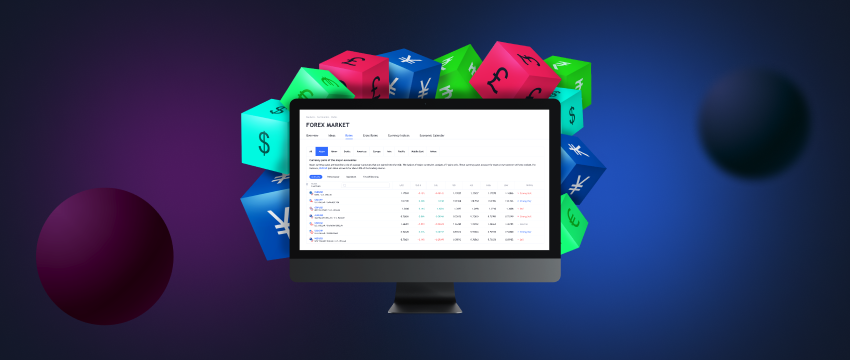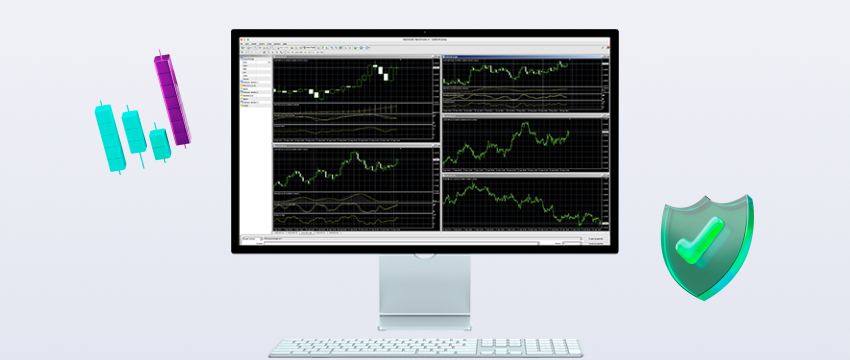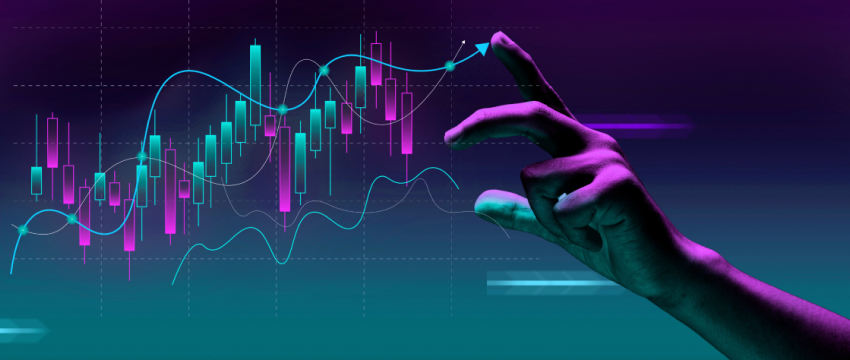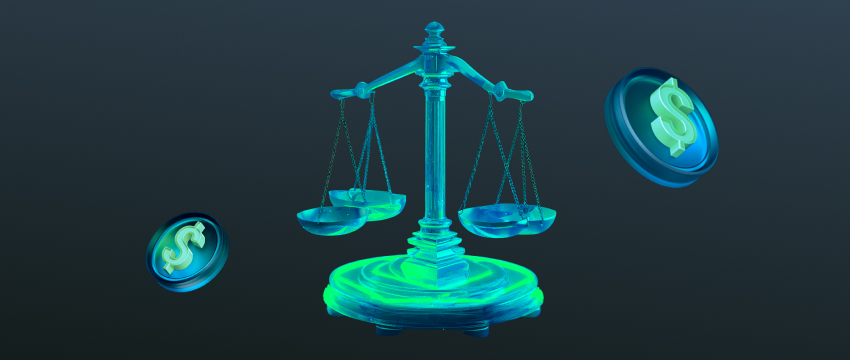Diving into any new industry, especially forex, requires planning. In this article, we’ll break down the process of how to start trading in 7 simple but critical steps.
The forex market appeals to traders worldwide looking to earn a profit off trading currencies online. It is the largest and most liquid financial market across the globe, and sees approximately US$6.6 trillion worth of trades a day, providing the opportunity for both novice and experienced traders everywhere to make gains. However, forex trading can also lead to large potential losses so the mitigating risk is key to achieving success.
Step 1: Get educated
Yes, education is super important as you embark on your forex trading journey. Learning everything there is to learn about making a trade and managing risk is necessary to avoid losing large amounts of capital.
But what does this look like in practice? Well, for one, read, read, and then read some more. This includes blogs, articles, FAQs, e-books, forex guides, reviews, and more. Consume as much information as you can to become knowledgeable about what trading in forex entails. Look to YouTube and other video sources. Participate in webinars. Listen and learn, so that you are better informed to make successful trading decisions. Analyse different forex trading strategies and draw from them any useful tips that will help you build a strategy of your own. Review different trading styles to find one best suited to your character and risk tolerance.

Step 2: Identify your trading goals
Defining your objectives is key to having something to work towards. This begins by establishing what you want to achieve with trading forex. Once you’ve determined the end goal, design a trading strategy that will help you get to where you want to reach.
Step 3: Build a trading strategy
As with any plan, a forex trading strategy will provide you with the framework needed to help you manage your trades better, reduce the potential for risk and achieve your trading goals. A strategy should be adjustable based on the performance of your trades and whether your objectives will be met. It considers elements like size and type of trades, trading style, trading techniques, the level of risk you’re willing to incur, market environments, the potential for profit or loss, etc.
Step 4: Choose a reputable CFD forex broker
CFD forex brokers act as an intermediary between traders and the forex market. They offer different trading platforms, be this an in-house trading platform or a forex trading platform like the globally renowned MetaTrader 4 (MT4) that traders around the world use. In the process of choosing a CFD forex broker, a trader should consider the following factors:
- Technology: ensure the broker’s trading platform is cutting-edge, customizable to your trading needs, secure, easy to use, and offers technical and fundamental analytics tools, trading alerts, educational resources and other features to help you become a more successful trader.
- Client support: offers high-quality, responsive customer support across all channels, by telephone, live chat, or email.
- Initial deposit: all brokers have their own initial deposit requirements, some even as low as US$50. Consider the funds you intend to deposit into your new brokerage account.
- Low fees: make sure you understand all terms and conditions regarding the types of brokerage fees you might have to pay if any. Transparency is vital.
Step 5: Open a demo forex trading account
Once you’ve selected a CFD forex broker, open a demo account to get a feel for their trading platform and to practice your trades. A demo account offers a risk-free trading environment in which traders can use virtual funds to test their trading strategies and trading techniques. Demo accounts also give traders the opportunity to acquire the necessary expertise in different market conditions and to evaluate the level of risk they’re prepared to take on before moving to a live trading environment.
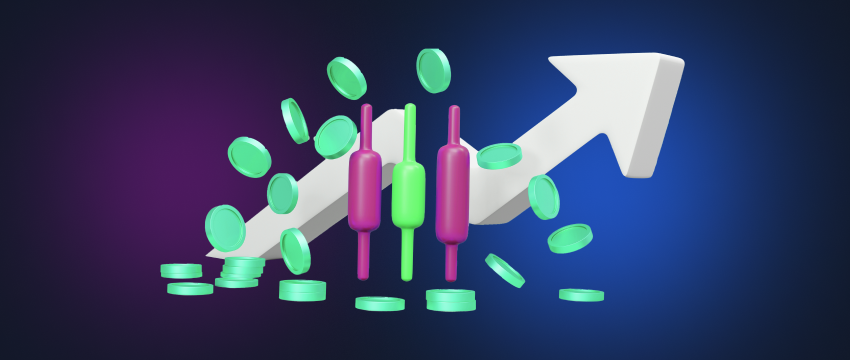
Step 6: Moving to a live forex trading account
Different CFD forex brokers offer different types of trading accounts, each with their own distinct benefits, requirements, or restrictions. Before moving to a live trading account, traders should first ensure that they’ve put in enough practice to be able to trade with real money and whether all the knowledge they’ve acquired will help them make better-informed trading decisions. Traders must also consider more practical elements like:
- The amount they intend to fund their account with
- The level of risk they can tolerate
- The amount of time they can commit to trading daily
- Trading goals and trading style
- Ability to tweak trading strategies or techniques when required
- Ability to respond to unanticipated market movements should they arise
Step 7: Properly managing risk
Knowing how to manage risk to avoid losing large amounts of money is critical when venturing down the path of forex trading. This is because trading forex is characterised by high volatility. How a trader manages risk is down to temperament, expertise, demeanour, and skills. It’s also largely dependent on a trader having a proper risk management strategy in place to guide them through the complexities and challenges that the forex industry will consistently throw their way. Some of the things that someone trading forex online can implement to mitigate risk include
So, what are some of the ways forex traders can protect themselves from risk?
- Try and quantify any potential loss in advance. Do this by reviewing possible risks that may (or may not) come with opening or closing a trade. Establish whether these risks are in alignment with your trading strategy or the level of risk you’re happy to take on.
- Ensure you have a proper understanding of the risks that come with leverage. Don’t forget that while high leverage may see you earn large profits, it can also magnify losses exponentially. Only allocate funds to a particular trade once you’ve totally understood the dangers that leverage could impose. Further, make use of tools that can help limit losses, like stop-loss or take-profit orders.
- Learn how to analyse and interpret market data through technical and fundamental analysis. The forex market is very volatile, and price movements are impacted significantly by global economic, political, and environmental instabilities. The ability to interpret these factors’ effect on the market may help improve your ability to gauge trading risks better.
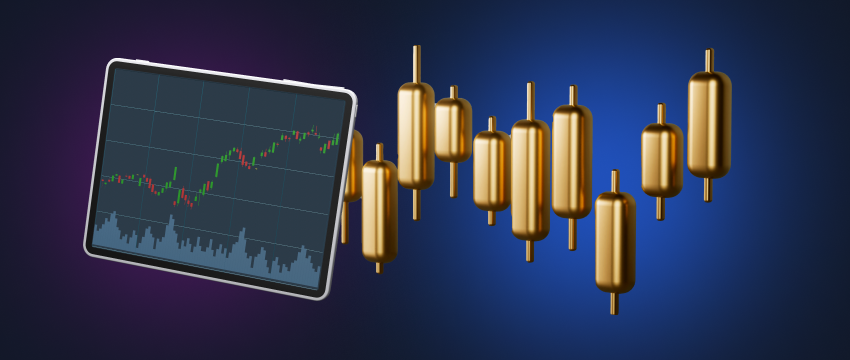
In conclusion
Throughout the process of learning how to trade, know that exercising caution and discipline plays a valuable role in making advantageous decisions. Don’t be impulsive and show restraint to increase the likelihood or potential of making a profit.
Also, visit the T4Trade Academy online and gain access to an exclusive variety of educational webinars, podcasts, and videos on demand to improve your trading skills, explore different trading strategies and get answers to your forex-related questions.
Disclaimer: This material is for general informational & educational purposes only and should not be considered investment advice or an investment recommendation. T4Trade is not responsible for any data provided by third parties referenced or hyperlinked, in this communication.
